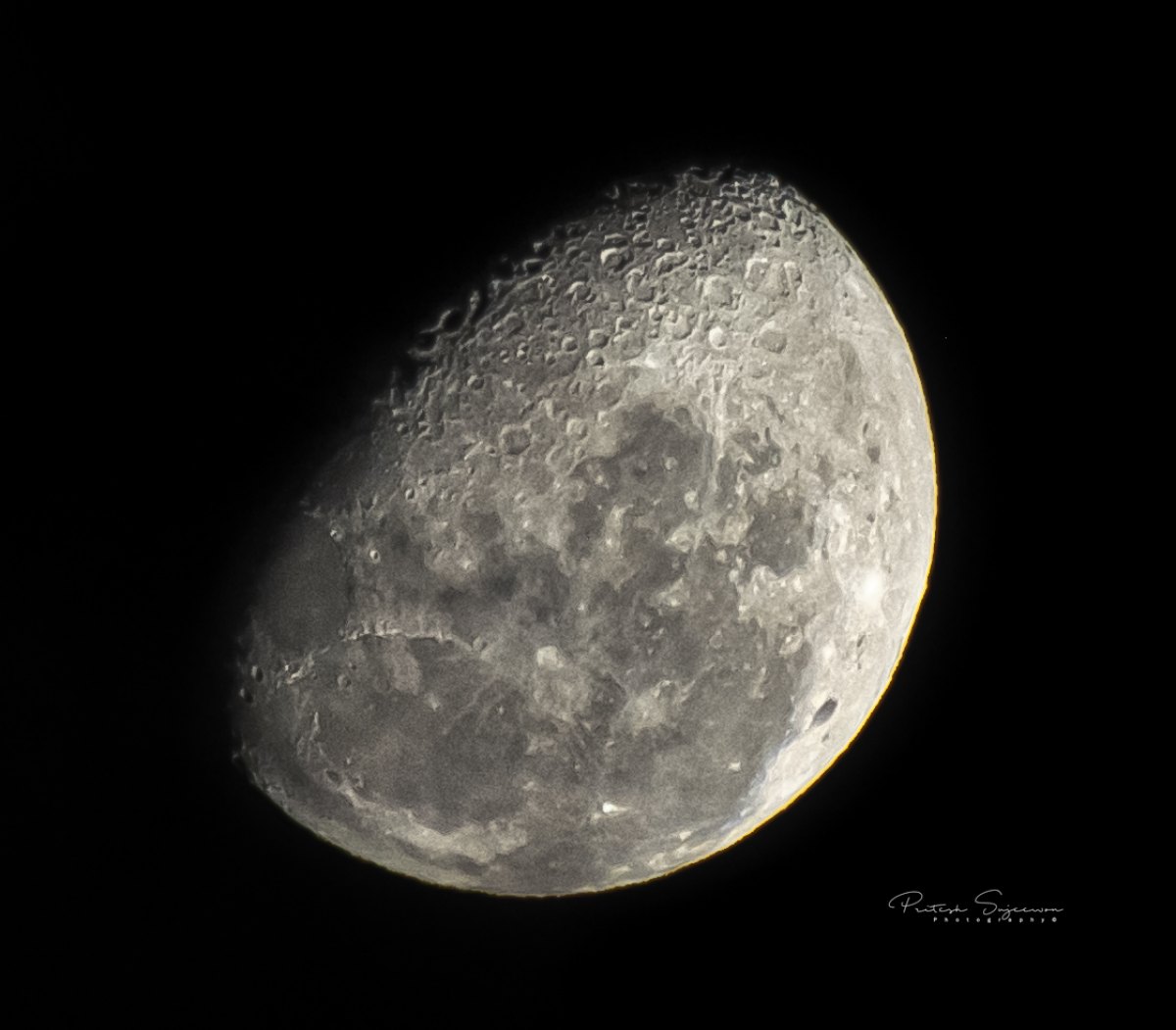
Photography of the craters of the moon

I am very fond of taking night shots of the moon. Recently i captured the moon with my Nikon D500, in the north of Mauritius at Mon Choisy. The night was clear and with almost no light pollution. I took the shot with a 300mm lens. Close-up photography of the moon is an awe-inspiring experience. The moon is the Earth's only natural satellite and has captivated the imaginations of humans for centuries. With advancements in technology, it is now possible to capture the intricate details of the moon's surface through close-up photography. In this article, we will explore the beauty and complexity of the moon as seen through the lens of a camera. To begin, let's consider the equipment necessary for close-up photography of the moon. A telescope is the primary tool used for this purpose, and it is equipped with a camera that can capture high-resolution images. Specialized telescopes designed specifically for astrophotography are available, and they offer the highest level of detail and clarity. Additionally, a tripod is necessary to keep the telescope steady during long exposure times, which can be several minutes. One of the most striking features of the moon is its craters. These circular indentations on the surface of the moon are the result of asteroid impacts that occurred billions of years ago. Through close-up photography, we can see the intricate details of these craters, including their size, shape, and depth. Some craters are surrounded by a ring of material ejected during the impact, while others have central peaks formed by the rebound of the lunar crust after the impact. The study of these craters provides valuable insights into the history of the moon and the solar system. Another feature of the moon that is visible through close-up photography is the network of ridges and valleys that crisscross its surface. These features are the result of tectonic activity and volcanic eruptions that occurred in the moon's distant past. Through close-up photography, we can see the intricate details of these features, including their length, depth, and curvature. By studying these features, scientists can learn more about the moon's internal structure and the geological processes that shaped its surface. The moon's surface is also covered in a fine layer of dust, which is visible through close-up photography. This dust is the result of the constant bombardment of the moon by micrometeoroids, which break down the surface material into a fine powder. Through close-up photography, we can see the individual grains of this dust, which are much smaller than a grain of sand. This dust is an important resource for future human exploration of the moon, as it can be used for a variety of purposes, including the production of oxygen and rocket fuel. Finally, close-up photography of the moon allows us to see the subtle color variations on its surface. The moon is not just a monochromatic gray ball in the sky, but rather a complex mix of colors that are visible under the right conditions. These colors are the result of the different mineral compositions of the moon's surface, and they can be used to study the geology of the moon in greater detail. In conclusion, close-up photography of the moon is an incredible experience that allows us to see the beauty and complexity of our nearest celestial neighbor. Through high-resolution images captured by telescopes, we can study the intricate details of the moon's craters, ridges, valleys, and dust, as well as its subtle color variations. These images provide valuable insights into the history and geology of the moon, and they serve as a reminder of the incredible natural wonders that exist beyond our planet.
We have 273 guests and no members online